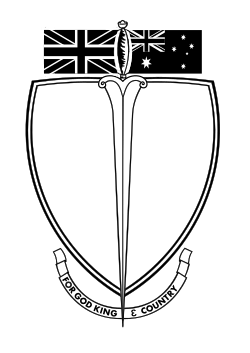Australian National Socialist Party
The Australian National Socialist Party (ANSP) was a minor Australian Nazi (short for national socialist) party that was formed in 1962. It merged into the National Socialist Party of Australia, originally a splinter group, in 1968.
Australian National Socialist Party | |
|---|---|
| Leader | Ted Cawthron Don Lindsay Arthur Smith |
| Founded | 1962 |
| Dissolved | 1968 |
| Succeeded by | National Socialist Party of Australia |
| Headquarters | Sydney, Australia |
| Ideology | Nazism White supremacy |
| Political position | Far-right |
| Part of a series on |
| Far-right politics in Australia |
|---|
 |
|
Active organisations
|
|
Formation
The Australian National Socialist Party was launched in 1962 by University of Adelaide physics student Ted Cawthron and Sydney council worker Don Lindsay. They were vigorously anti-communist, and argued for the perpetuation of the White Australia policy, a defensive approach to Asia and the total annexation of New Guinea.[1][2]
The “party” consisted entirely of Cawthron and Lindsay until they were joined in July 1963 by Arthur Smith, known for his outward anti-Semitism and aggressive tactics.[1] He was a prominent figure in the Australian Nationalist Workers' Party, an attempted continuation of the "Australian Party" founded in September 1955 by right-wing journalist Frank Browne and disbanded in September 1957. Browne's party never had a serious following, though the party received some media attention and generally advocated far right positions.[3]
Smith was the party's first leader, who managed to slightly increase membership by merging with a host of other motley white supremacist groups in Melbourne.[1] In 1964 a tiny Victorian group, the Australian National Renaissance Party, was incorporated into the ANSP. Its total membership remained very small, although it received substantial publicity from a report by the Australian Broadcasting Corporation's Four Corners, which broadcast the proceedings of a general meeting and prompted calls for National Socialism to be banned.[4]
Decline
The ANSP's headquarters were raided by police on 26 June 1964, during which Smith and four other party members were arrested. The five were charged with a variety of offences, with Smith convicted of possessing unlicensed firearms and explosives and possession of stolen goods; he served a six-month gaol term. While Smith was imprisoned, Robert Pope, who had led the Australian National Renaissance Party, became acting leader, but the party's membership had collapsed following the raid. Attorney-General Billy Snedden told parliament that the party was under surveillance and probably had a membership of fewer than 100. Pope had Smith expelled from the party while he was in prison, and by late 1964 the party was essentially moribund.[5]
Throughout 1965, Smith was engaged in re-launching the ANSP. In early 1966, Smith attracted media attention when he collapsed while speaking at the Domain. Several poorly frequented demonstrations were held in support of the Vietnam War. The party again went into remission when Smith returned to his native Tasmania, but it re-emerged in June 1967 with anti-communist and anti-Semitic demonstrations. At this point, Cawthron and several other defectors formed the competing National Socialist Party of Australia (NSPA), which rejected the radicalism of the ANSP.[6]
In May 1968, Smith resigned from the party and retired from politics, leaving the leadership to Eric Wenberg, a long-term party member and militarist. Wenberg made overtures to Cawthron, and the ANSP was merged into the NSPA.[7]
See also
References
- A brief history of Nazism in Australia
- Harcourt, David (1972). Everyone Wants to be Fuehrer: National Socialism in Australia and New Zealand. Angus and Robertson. pp. 4–6. ISBN 0207124159.
- Jaensch, Dean; Mathieson, David (1998). A plague on both your houses: minor parties in Australia. Allen and Unwin. pp. 80, 87. ISBN 1-86448-421-7.
- Harcourt, David (1972). Everyone Wants to be Fuehrer: National Socialism in Australia and New Zealand. Angus and Robertson. pp. 6-13. ISBN 0207124159.
- Harcourt, pp. 16-19.
- Harcourt, pp. 20-25.
- Harcourt, pp. 30-31.
External links
- Nazi Party in Australia - 31 Jul 1964 from the Australian Broadcasting Considerations Four Corners